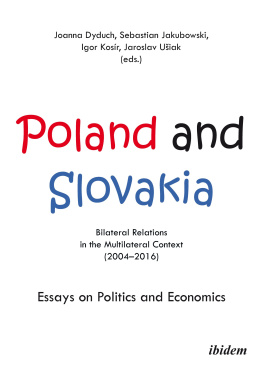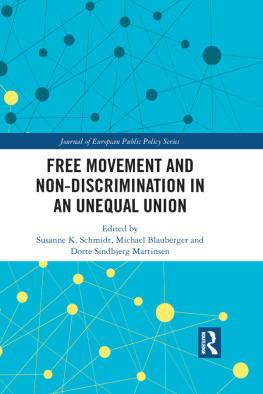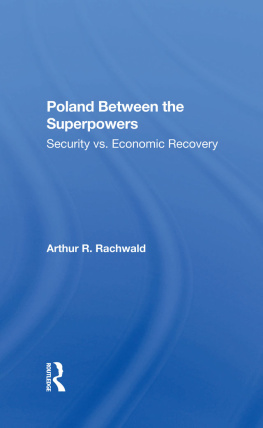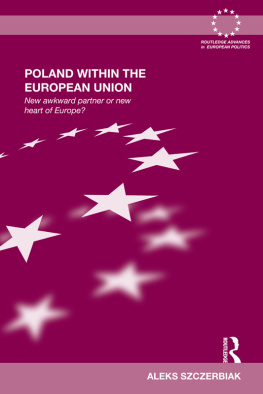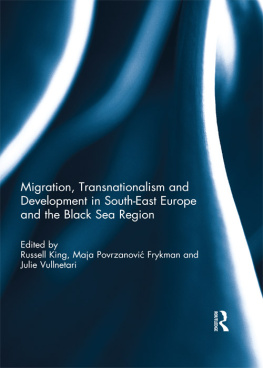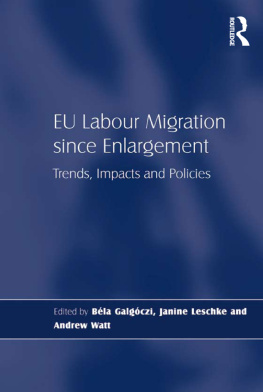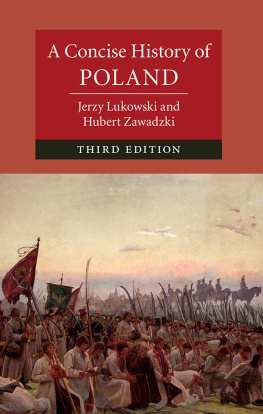Polands Post-War Dynamic of Migration
To my little son Mareczek
First published 2001 by Ashgate Publishing
Reissued 2019 by Routledge
2 Park Square, Milton Park, Abingdon, Oxon, OX14 4RN
52 Vanderbilt Avenue, New York, NY 10017
Routledge is an imprint of the Taylor & Francis Group, an informa business
Krystyna Iglicka 2001
All rights reserved. No part of this book may be reprinted or reproduced or utilised in any form or by any electronic, mechanical, or other means, now known or hereafter invented, including photocopying and recording, or in any information storage or retrieval system, without permission in writing from the publishers.
Notice:
Product or corporate names may be trademarks or registered trademarks, and are used only for identification and explanation without intent to infringe.
Publishers Note
The publisher has gone to great lengths to ensure the quality of this reprint but points out that some imperfections in the original copies may be apparent.
Disclaimer
The publisher has made every effort to trace copyright holders and welcomes correspondence from those they have been unable to contact.
A Library of Congress record exists under LC control number:
ISBN 13: 978-1-138-72656-7 (hbk)
ISBN 13: 978-1-315-19130-0 (ebk)
Issues around human migratory movements in Central and Eastern Europe in the post-war era are a topic that has been seldom addressed and insufficiently studied by researchers from both the region itself and from Western Europe.
The few attempts that have been made to make analyses of some depth have mostly centred on post-1989 migratory movements. This is somewhat understandable because only since the fall of the Berlin wall have Western European politicians and societies become aware that the other, or Eastern, half of Europe, along with its significantly more mobile residents, is inevitably going to approach them economically, commercially, socially, politically and culturally. The opening up of borders brought rejoicing only at the beginning: after a short celebration of all peoples freedom of movement, a fear of mass immigration from Central and Eastern Europe overpowered liberal views on freedom of cross-border movement for all European denizens.
A similar fear was echoed in Central European countries. Rapidly growing migration from the East during the transformation period led to a strengthening of opinion against the inflow of immigrants. Moreover, at the initiation of talks on the entrance of Central European countries into the European Union, it was made clear that the borders of the new, future Europe that would run along the Bug river between Poland and the former Soviet Union, are to be guarded as stringently, if not more so, as the present border along the Oder river. If ever Europe was simultaneously united and divided it is now, as it shall remain in the near future.
Poland has an exceptionally important role to play from the perspective of a unifying Europe, since the Eastern border of Poland will be (following Polands ascension to the European Union) the future frontier of the expanded Europe. That is why this works analysis of the mechanisms behind recent fluxes into Poland of people who, after EU enlargement, would otherwise be excluded from the expanded Europe represents interesting material that is new to the English-language literature.
This book also contains an analysis of Poland-bound migratory movements from the West. An analysis of international migration flows stemming from the penetration of capitalist economic relations into adjacent countries wherein non-market or pre-market social and economic structures prevail was undertaken for the first time in the literature on Eastern European population movements.
This volume fills a gap in the literature as it attempts to make a deep, socio-economic and political analysis of the trends and mechanisms of migration in Central and Eastern Europe (and especially in Poland) since 1945 and in light of future EU expansion. The author emphasises that one should not analyse trends that have occurred after 1989 without being aware of the history and mechanisms behind migratory movements in Central and Eastern Europe prior to that date. That is also why, although changes in patterns and mechanisms of migration that occurred since the collapse of the communist system have been emphasised, the years between 1945 and 1989 act as the reference point for the analysis.
Trends and mechanisms in migration to and from Poland, which is treated as an illustrative country for the whole Central European region, have been analysed according to new approaches in migration theory, approaches that have already been tested for other regions. Having been conducted in such a way, the analysis clearly shows that the historical perspective in studying migration movement dynamics is uncommonly productive when examining Poland. Thanks to this perspective, it was possible to indicate why and how Poland, a central European latecomer to the global stage, has slowly begun to change from being a major sending country into being a country of net-immigration and transit. The historical perspective has also helped to show and analyse Polands slow transformation from a country belonging to the Central and Eastern European migration system into a country that soon may belong simultaneously to two otherwise separate ones: the Eastern and the Western European systems.
I managed to write this book thanks to many people who at different times were present in my life. Firstly, I would like to thank my mum, whose life and attitudes made me aware that in order to achieve her professional goals a woman must be extremely dynamic and strong. Secondly, I would like to express my gratitude to the late Keith Sword, who taught me self-confidence and firmness at the time he worked with me in the years 19961998.1 would also like to thank my family (my husband and my son), who due to my ambitions and commitments related to my job for many years bravely endured numerous moves, life in different countries and continents, and sometimes many months of separation. Finally, I wouldnt have been able to write this book if not for my Fulbright scholarship which enabled me to spend a time in the Population Studies Center at the University of Pennsylvania in 1999/2000.1 am highly indebted to the Board of Directors of the Polish-American Fulbright Commission who nominated me for this scholarship and to Doug Massey for his kindness and assistance.
| CEE - | Central and Eastern Europe |
| CIM - | the German Public Recruitment Agency for Highly Skilled Professionals |
| CIS - | Commonwealth of Independent States |
| CMEA - | Council of Mutual Economic Assistance |
| CoE - | Council of Europe |
| COMECON - | see CMEA |
| CSO - | Central Statistical Office |
| EU - | European Union |
| FRG - | Federal Republic of Germany |
| FYROM - | Former Yugoslav Republic of Macedonia |
| GDR - | German Democratic Republic |
| GPC - | Governmental Population Commission |
| GRC - | German Red Cross |
| GUS | see CSO |


